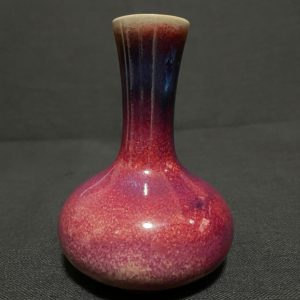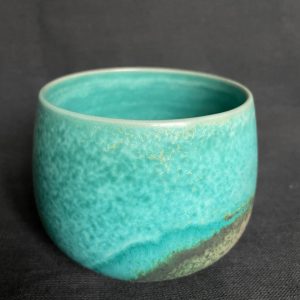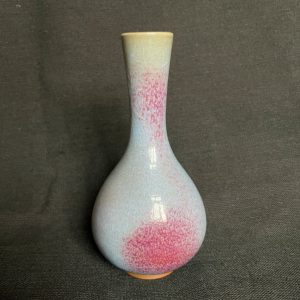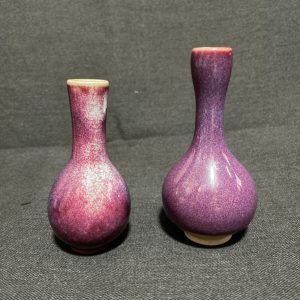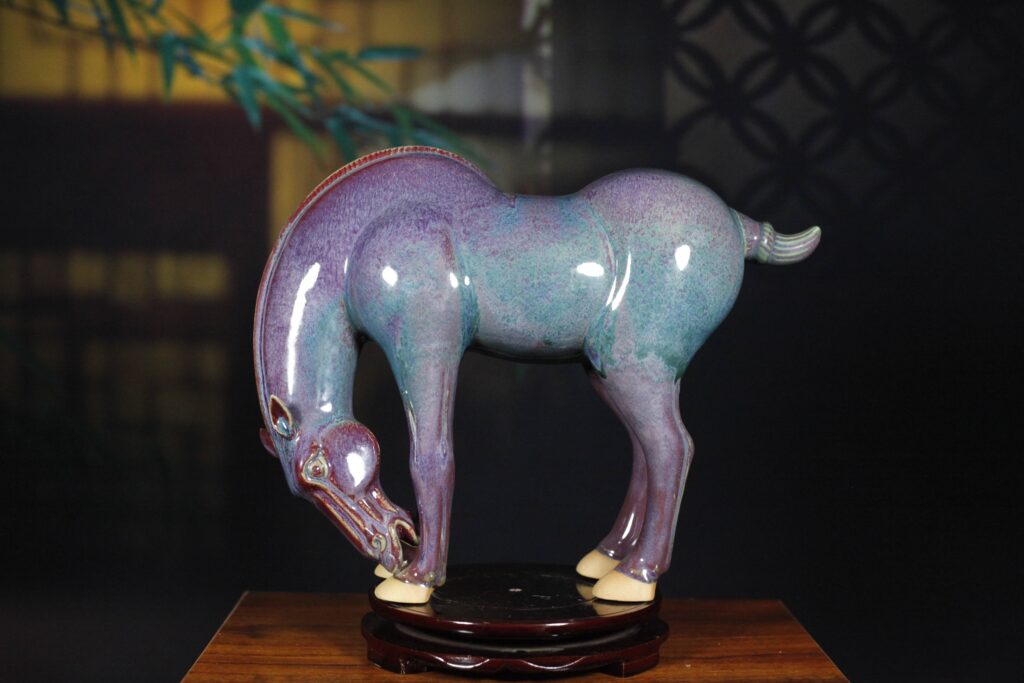
Jun porcelain, one of China’s five famous ceramics, is renowned for its distinctive Jun porcelain glaze. Unlike the uniform tones of other ceramics, the Jun porcelain glaze captivates with its kiln-transformed, vibrant colors and organic textures, offering an unrepeatable artistic allure. From the deep starry blue to the soft moonlight white and the fiery crimson, every shade of Jun porcelain glaze emerges from the ancient kilns of Shenhou Town, honed over a millennium. This naturally formed color palette not only attracts art collectors but also brings an Eastern elegance to modern home décor. This article delves into the formation, cultural significance, and contemporary value of Jun porcelain glaze.
The Craft Behind Jun Porcelain Glaze: The Beauty of Kiln Transformation
The essence of Jun porcelain glaze lies in “kiln transformation,” a defining feature that sets Jun porcelain apart. Kiln transformation occurs during high-temperature firing (often reaching 1300°C), where mineral components in the glaze undergo chemical reactions, producing unexpected colors and patterns. This unpredictability is the soul of Jun porcelain glaze. Traditionally, Jun porcelain uses natural mineral glazes—rich in iron, copper, and cobalt—which meld in the kiln’s reducing atmosphere to create layered, vivid hues.
For instance, the iconic “starry blue” Jun porcelain glaze stems from copper oxide shifting in a reduced environment, yielding a spectrum of blues reminiscent of a twinkling night sky. Meanwhile, the “rouge red” hue arises from iron’s oxidation-reduction dance, blooming into a sunset-like brilliance under precise conditions. This randomness ensures each piece is one-of-a-kind, embodying the Chinese adage: “Enter the kiln in one color, emerge in a myriad of shades.” For Western consumers seeking individuality, the uniqueness of Jun porcelain glaze is a key draw.
Top rated products
The Historical and Cultural Value of Jun Porcelain Glaze
The allure of Jun porcelain glaze extends beyond technique to its rich historical and cultural roots. Originating in the Tang Dynasty and flourishing in the Northern Song, Jun porcelain earned imperial favor under Emperor Huizong for its resplendent glaze. During the Song era, Jun porcelain glaze featured celestial azure and moonlit white, symbolizing the Confucian ideals of tranquility and harmony. Today, these classic hues can still be admired in Song Dynasty artifacts at institutions like The British Museum.
In 2008, the firing techniques of Jun porcelain were officially included in China’s second batch of National Intangible Cultural Heritage by the State Council, underscoring its enduring legacy. Shenhou Town, the birthplace of Jun porcelain, preserves traditional kilns and handcrafting methods, with each piece reflecting artisans’ reverence for nature. The flowing, transformative Jun porcelain glaze is more than a technical marvel—it embodies the Chinese philosophy of “harmony between man and nature.” This cultural depth positions it as both a functional and collectible treasure in Western markets.
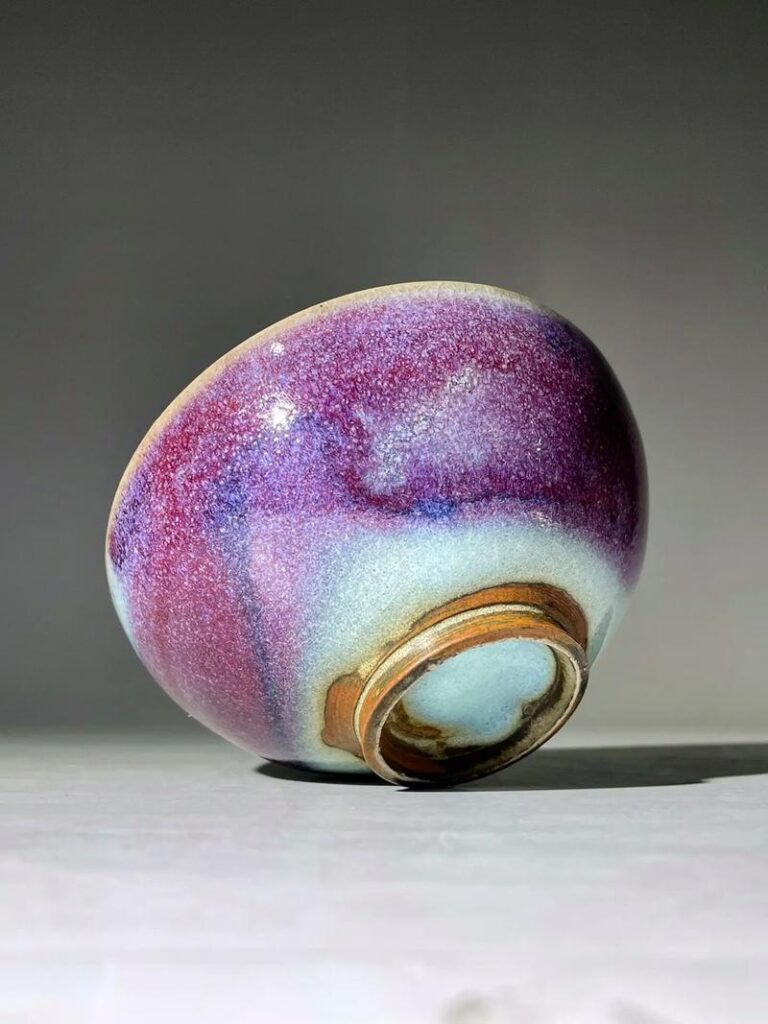
Jun Porcelain Glaze in Modern Aesthetics and Applications
In contemporary design, Jun porcelain glaze finds new life through its versatility and artistry. For Western audiences, its organic patterns align seamlessly with minimalist or bohemian home décor. A “starry blue” Jun porcelain vase on a white marble table, for example, serves as a striking focal point while enhancing spatial depth. Meanwhile, “rouge red” or “peacock green” pieces offer collectors an exotic Eastern mystique.
Moreover, the eco-friendly nature of Jun porcelain glaze resonates with Western sustainability trends. Crafted from natural minerals without synthetic additives, its low-impact production appeals to green-conscious buyers.
The Science and Art of Jun Porcelain Glaze
Scientifically, Jun porcelain glaze results from a complex interplay of chemistry and physics. Take the blue glaze: copper in the mix reacts with oxygen or carbon dioxide at high heat, forming copper oxide or its reduced state, with concentration and firing duration dictating the shade. Iron, meanwhile, yields reddish-brown in an oxidizing atmosphere and grayish-green in a reducing one. These subtle shifts hinge on kiln temperature, atmosphere, and cooling speed—any variation alters the outcome.
Artistically, the beauty of Jun porcelain glaze lies in its unpredictability. Artisans may control glaze recipes and firing conditions, but the final result remains a mystery. This “natural painting” elevates Jun porcelain beyond mere craft into a collaboration with nature. Western art critics often liken it to “flowing abstract art,” with each glaze streak a stroke of the earth’s brush.
How to Appreciate and Care for Jun Porcelain Glaze
For collectors or users, appreciating Jun porcelain glaze involves a few key observations: check for smooth, flowing glaze transitions—high-quality pieces avoid harsh color blocks; examine the texture—“ice-crackle” patterns (opening cracks) are a classic trait adding depth; and assess color harmony, as top-tier Jun porcelain glaze exudes a subtle, profound elegance.
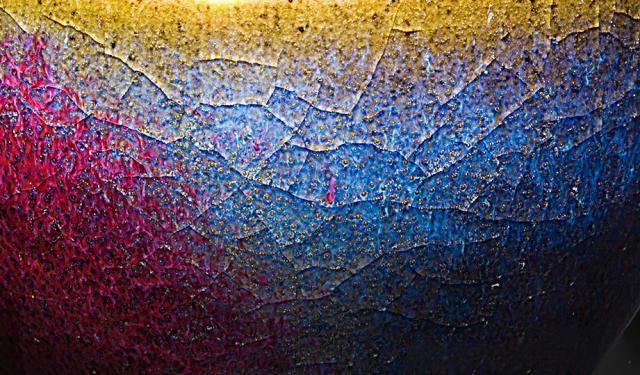
For care, while durable, Jun porcelain glaze requires protection from extreme temperature shifts and harsh cleaners. Hand-wash daily-use items with mild soap and dry with a soft cloth; decorative pieces need only occasional dusting. Proper maintenance ensures the glaze’s luster.
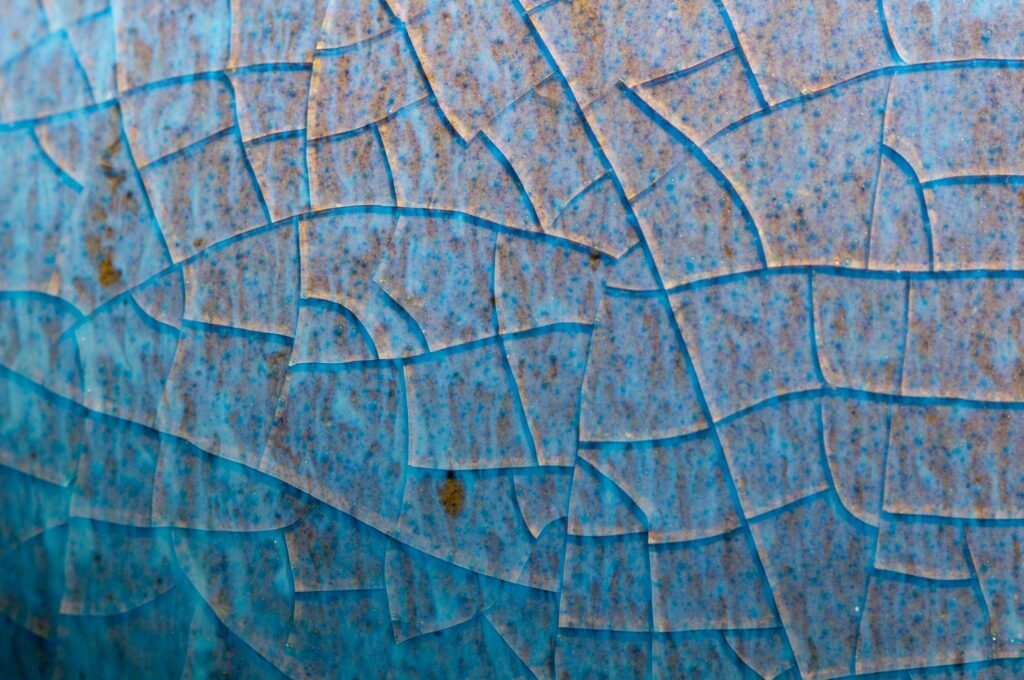
Conclusion: The Timeless Charm of Jun Porcelain Glaze
Jun porcelain glaze is a symphony of ancient kilns and natural forces, each piece a testament to Shenhou artisans’ skill and patience. From Song Dynasty imperial courts to today’s global stage, its kiln-transformed beauty transcends time, winning over art lovers worldwide. Whether a décor highlight or a collector’s gem, Jun porcelain glaze weaves a tale of unrepeatable natural aesthetics into China’s ceramic legacy.
Curious about the secrets of Jun porcelain glaze? Explore Kilnphx’s handcrafted Jun porcelain collection—from starry blue to rouge red, every glaze is a singular masterpiece awaiting a place in your life.
